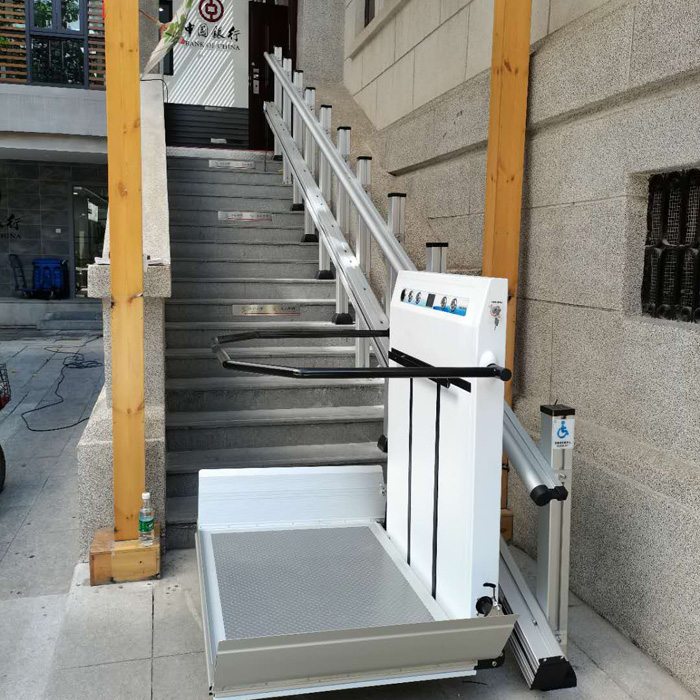
Vertical platform lifts are designed to enhance accessibility for individuals with disabilities or mobility limitations by providing a safe and convenient solution to overcome architectural barriers such as staircases or varying floor levels. These lifts offer numerous benefits that improve accessibility for everyone, regardless of their physical abilities. In this essay, we will discuss how vertical platform lifts enhance accessibility for all.
Firstly, vertical platform lifts provide wheelchair users with a reliable and efficient means of navigating barriers. Unlike traditional ramps, which require considerable space and may not be feasible in all situations, vertical platform lifts can be installed in tight spaces and can be used both indoors and outdoors. This ensures that wheelchair users have unobstructed access to various areas such as buildings, parks, or shopping centers, promoting their independence and inclusion in society.
Moreover, vertical platform lifts offer a safer alternative to using stairs or escalators for individuals with limited mobility or stability. Stairs can be challenging and dangerous for individuals with disabilities or those who use mobility aids such as crutches or walkers. Vertical platform lifts eliminate the risk of falls or accidents by providing a secure and stable platform for these individuals to safely ascend or descend.
In addition to wheelchair users and individuals with limited mobility, vertical platform lifts also benefit other groups, such as parents with strollers or individuals carrying heavy loads. By eliminating the need to lift these heavy objects up or down stairs, vertical platform lifts make it easier for these individuals to navigate different levels, saving them time and effort.
Furthermore, vertical platform lifts enhance accessibility for individuals with visual impairments. These lifts often feature tactile buttons and braille instructions, ensuring that individuals with vision loss can easily operate the lift independently. Additionally, audio announcements or indicators can further assist individuals with visual impairments in determining the arrival or departure of the lift.
Vertical platform lifts can also enhance accessibility for individuals with temporary disabilities. In cases where someone has sustained an injury or is recovering from surgery, their mobility may be temporarily limited. Vertical platform lifts provide a temporary solution in such situations, allowing individuals to access various areas without straining themselves or risking further injury.
Another way in which vertical platform lifts enhance accessibility for all is by complying with accessibility regulations and standards. Many countries have implemented accessibility laws that require public buildings and facilities to be accessible to individuals with disabilities. Installing vertical platform lifts in these spaces ensures compliance with these regulations, guaranteeing that everyone has equal access to public spaces.
Furthermore, the availability of vertical platform lifts promotes awareness and inclusivity. When individuals see that accessibility provisions have been made, it sends a message that people with disabilities are valued and welcome. This creates a more inclusive and accepting environment for individuals with disabilities, fostering a sense of belonging and equal opportunities for everyone.
Vertical platform lifts provide numerous benefits that enhance accessibility for all individuals, regardless of their physical abilities. They offer a safe and efficient solution for wheelchair users and individuals with limited mobility, while also benefiting parents with strollers or individuals carrying heavy loads. Moreover, these lifts assist individuals with visual impairments and can provide temporary accessibility for those with temporary disabilities. By complying with accessibility regulations and promoting inclusivity, vertical platform lifts contribute to creating a more accessible and inclusive society for all.
